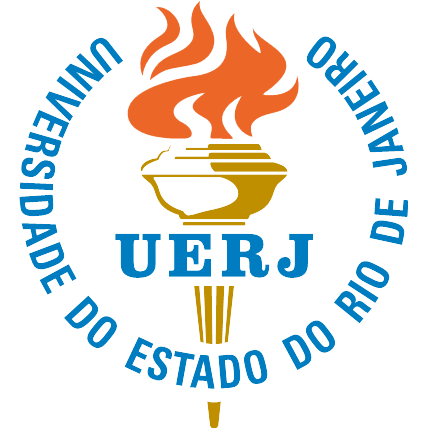Evaluación de la cultura de seguridad del paciente entre profesionales de la estrategia salud de la familia
DOI:
https://doi.org/10.12957/reuerj.2024.87675Palabras clave:
Seguridad del Paciente, Cultura Organizacional, Gestión de la Calidad Total, Personal de Salud, Atención Primaria de SaludResumen
Objetivo: evaluar la cultura de seguridad del paciente entre enfermeros, técnicos de enfermería y agentes comunitarios de salud del equipo de estrategia salud de la familia. Método: estudio descriptivo, transversal, con abordaje cuantitativo, realizado entre los profesionales enfermeros, técnicos de enfermería y agentes comunitarios de la salud de la estrategia de salud de la familia de un distrito de salud del municipio de Manaus, Amazonas, de noviembre de 2017 a mayo de 2018, utilizando el cuestionario “Investigación sobre Cultura de Seguridad del Paciente para la Atención Primaria”. Datos analizados por el test chi-cuadrado y análisis de variancia. Protocolo aprobado por el comité de ética en investigación. Resultados: entre 283 participantes, las dimensiones “asistencia al paciente” y “trabajo en equipo” fueron fuertes, en cuanto cuatro presentaron fragilidad. Consideraciones finales: los hallazgos apuntan para una evaluación de la cultura de seguridad del paciente adecuada bajo la percepción de los enfermeros, técnicos de enfermería y agentes comunitarios de salud.
Citas
Reis CT. Cultura em segurança do paciente. Sousa P, Mendes W. Segurança do paciente: criando organizações de saúde segura. Rio de Janeiro: Fiocruz, 2014 [cited 2024 Nov 30]; p. 75-99. Available from: https://books.scielo.org/id/bskw2.
Dal Pai S, Brigo Alves DF, Pluta P, Dalsasso Batista Winter V, Kolankiewicz ACB. Evaluation of the patient safety culture in primary health care. Rev Baiana Enferm. 2020 [cited 2024 Nov 30]; 34:e3484. DOI: https://doi.org/10.18471/rbe.v34.34849.
World Health Organization, WHO Patient Safety. Conceptual framework for the international classification for patient safety version 1.1: final technical report January 2009. World Health Organization, 2010 [cited 2024 Nov 30]. Available from: https://iris.who.int/handle/10665/70882.
Institute of Medicine (US) Committee on Quality of Health Care in America, Kohn LT, Corrigan JM, Donaldson MS. To Err is Human: Building a Safer Health System. Washington (DC): National Academies Press (US); 2000 [cited 2024 Jul 26]. DOI: Kohn LT, Corrigan JM, Donaldson MS, https://doi.org/10.17226/9728.
Aquino LAP, Araújo DAS, Cunha YA, Santos VEP, Saraiva COPO, Martins QCS. Estratégias para a promoção da cultura de segurança do paciente no centro cirúrgico: uma revisão sistemática. Rev. enferm. UFPE on line. 2024 [cited 2024 Dec 02]; 18:e257173. DOI: https://doi.org/10.5205/1981-8963.2024.257173.
Yuan CT, Dy SM, Lai AY, Oberlander TBA, Hannum SM, Lasser E, et al. Challenges and strategies for patient safety in primary care: a qualitative study. Am J Med Qual. 2022 [cited 2024 Dec 06]; 37(5):379-87. DOI: https://doi.org/10.1097/JMQ.0000000000000054.
Noviyanti LW, Ahsan A, Sudartya TS. Exploring the relationship between nurses' communication satisfaction and patient safety culture. J Public Health Res. 2021 [cited 2024 Dec 06]; 10(2):2225. DOI: https://doi.org/10.4081/jphr.2021.2225.
Mendes RS, Pessoa NRC, Santos MRG, Costa NFCG, Frazão CMFQ, Ramos VP. Strategies to promote patient safety in hemodialysis: an integrative review. Nephrol Nurs J. 2020 [cited 2024 Dec 06]; 47(5):447-54. Available from: https://pubmed.ncbi.nlm.nih.gov/33107717/.
Timm M, Rodrigues MCS. Cross-cultural adaptation of safety culture tool for Primary Health Care. Acta paul enferm. 2016 [cited 2024 Dec 07]; 29(1):26–37. DOI: https://doi.org/10.1590/1982-0194201600005.
Inácio ALR, Rodrigues MCS. Aplicação do Medical Office Survey on Patient Safety Culture: revisão integrativa. Acta paul enferm. 2022 [cited 2024 Dec 07]; 35:eAPE001222. DOI: https://doi.org/10.37689/acta-ape/2022AR01223.
Rayat CS. Variance-Ratio Test and Analysis of Variance (ANOVA). In: Statistical Methods in Medical Research. Singapore: Springer; 2018. DOI: https://doi.org/10.1007/978-981-13-0827-7_12.
Brasil. Lei Nº 14.874, de 28 de maio de 2024. Dispõe sobre a pesquisa com seres humanos e institui o Sistema Nacional de Ética em Pesquisa com Seres Humanos. : Conselho Nacional de Saúde; 2024 [cited 2024 Nov 28]. Available from: https://www.planalto.gov.br/ccivil_03/_ato2023-2026/2024/lei/l14874.htm.
Brasil. Resolução nº 510, de 7 de abril de 2016. Dispõe sobre as normas e diretrizes para a pesquisa com seres humanos. Brasília: Conselho Nacional de Saúde; 2016 [cited 2024 Nov 28]. Available from: https://bvsms.saude.gov.br/bvs/saudelegis/cns/2016/res0510_07_04_2016.html.
Bohrer JKL, Vasconcelos ACL, Bezerra ALQ, Teixeira CC, Andrade J, Santos PHF, Paranaguá TTB. Patient safety culture in Primary Health Care. Rev Rene. 2021 [cited 2024 Nov 30]; 22:e70874. DOI: https://doi.org/10.15253/2175-6783.20212270874.
Soratto J, Pires DEPD, Trindade LL, Oliveira JSAD, Forte ECN, Melo TPD. Job dissatisfaction among health professionals working in the family health strategy. Texto Contexto Enferm. 2017 [cited 2024 Nov 30]; 26(3):e2500016. DOI: https://doi.org/10.1590/0104-07072017002500016.
Assis BCS, Sousa GS, Silva GG, Pereira MO. Que fatores afetam a satisfação e sobrecarga de trabalho em unidades da atenção primária à saúde? Rev Eletrônica Acervo Saúde. 2020 [cited 2024 Nov 30]; 12(6):e3134. DOI: https://doi.org/10.25248/reas.e3134.2020.
Lamattina AA, Morais RCR. Segurança e saúde no trabalho: guia prático para técnicos. Formiga: Editora MultiAtual; 2024 [cited 2024 Nov 30]; 164 p. DOI: https://doi.org/10.5281/zenodo.10932499.
Paranaguá TT, Teixeira CC, Santana TS, Afonso TC, Oliveira MG, Bezerra AL. Aplicação do aprendido em treinamento sobre segurança do paciente: estratégias utilizadas por profissionais da atenção primária à saúde. Enferm Foco. 2022 [cited 2024 Dec 07]; 13:e-202220. DOI: https://doi.org/10.21675/2357-707X.2022.v13.e-202220.
Dolny LL, derda Lace JT, Nilson LG, Calvo MCM, Natal S, Maeyama MA. Educação permanente em saúde (EPS) no processo de trabalho de equipes de saúde da família (ESF). Braz J Health Rev. 2020 [cited 2024 Nov 30]; 3(1):15-38. DOI: https://doi.org/10.34119/bjhrv3n1-002.
Castro JVR, Amaro MDOF, Mendonça ET, Siman AG, Zanelli FP, de Carvalho CA. Effective communication in the reach of safe practices: conceptions and practices of the nursing team. Rev Enferm Atenção Saúde. 2023 [cited 2024 Nov 30]; 12(1):e202359. DOI: https://doi.org/10.18554/reas.v12i1.5153.
Rocha MP, Viana IS, Vieira IF. Patient Safety in Primary Health Care in a Brazilian municipality. Physis. 2021 [cited 2024 Dec 07]; 31(4):e310420. DOI: https://doi.org/10.1590/S0103-73312021310420.
Pacenko CL, Figueiredo KC, Nunes E, Cruchinho P, Lucas P. Mapping strategies for strengthening safety culture: a scoping review. Healthcare (Basel). 2024 [cited 2024 Dec 07]; 12(12):1194. DOI: https://doi.org/10.3390/healthcare12121194.
Alanazi FK, Lapkin S, Molloy L, Sim J. The impact of safety culture, quality of care, missed care and nurse staffing on patient falls: a multisource association study. J Clin Nurs. 2023 [cited 2024 Dec 07]; 32(19-20):7260-72. DOI: https://doi.org/10.1111/jocn.16792.
Bohrer JKL, Vasconcelos ACL, Bezerra ALQ, Teixeira CC, Andrade J, Santos PHF, Paranaguá TTB. Patient safety culture in Primary Health Care. Rev Rene. 2021 [cited 2024 Nov 30]; 22:e70874. DOI: https://doi.org/10.15253/2175-6783.20212270874.
Cruz MJB, Santos ADFD, Macieira C, Abreu DMXD, Machado ATGDM, Andrade EIG. Avaliação da coordenação do cuidado na atenção primária à saúde: comparando o PMAQ-AB (Brasil) e referências internacionais. Cad Saúde Pública. 2022 [cited 2024 Nov 30]; 38:e00088121. DOI: https://doi.org/10.1590/0102-311X00088121.
Silva LS, Menezes C, Nascimento LCD, Nitschke RG, Duarte DC, Fonseca Viegas SM. Demanda espontânea e acesso no Sistema Único de Saúde: vivências de usuários da atenção primária. Advances Enferm. 2021 [cited 2024 nov 30]; 39(1):30-9. Available from: https://pesquisa.bvsalud.org/portal/resource/pt/biblio-1151181.
Ribeiro SP, Cavalcanti MDLT. Primary Health Care and Coordination of Care: device to increase access and improve quality. Ciênc Saúde Coletiva. 2020 [cited 2024 Nov 30]; 25(5):1799-808. DOI: https://doi.org/10.1590/1413-81232020255.34122019.
Descargas
Publicado
Cómo citar
Número
Sección
Licencia
Derechos de autor 2024 Mitsi Silva Moisés, David Lopes Neto, Enock Barroso dos Santos, Linda Karolinne Rodrigues Almeida Cunha, Carlos Herbert Sousa de Moraes, Laíse Picanço Barbosa, Ellen Palmeira Assunção dos Santos

Esta obra está bajo una licencia internacional Creative Commons Atribución 4.0.
Al publicar en la Revista Enfermagem UERJ, los autores declaran que el trabajo es de su exclusiva autoría y asumen, por tanto, total responsabilidad por su contenido. Los autores retienen los derechos del autor de su artículo y concuerdan en permitir su trabajo usando un Permiso Público Internacional Creative Commons Atribución-NoComercial-SinDerivaciones (CC BY-NC-ND 4.0), aceptando así los términos y condiciones de este permiso (https://creativecommons.org/licenses/by-nc-nd/4.0/legalcode).
Este permiso posibilita que los utilizadores compartan el material en cualquier medio o formato con tal que se haga de forma: no adaptada; sin fines comerciales; con atribución de crédito (cita y referencia) a los creadores del trabajo y fuente original de publicación. Los autores conceden a la Revista Enfermagem UERJ el derecho de primera publicación, de identificarse como publicadora original del trabajo y le conceden a la revista un permiso de derechos no exclusivos para utilizar el trabajo de las siguientes formas:
(1) vender y/o distribuir el trabajo en copias impresas y/o en formato electrónico;
(2) distribuir partes y/o el trabajo en su totalidad con el objetivo de promover la revista por medio de Internet y otros medios digitales e impresos;
(3) guardar y reproducir el trabajo en cualquier formato, incluyendo medios digitales.
En consonancia con las políticas de la revista, a cada artículo publicado será atribuido un permiso Creative Commons Atribución-NoComercial-SinDerivaciones (CC BY-NC-ND 4.0).









